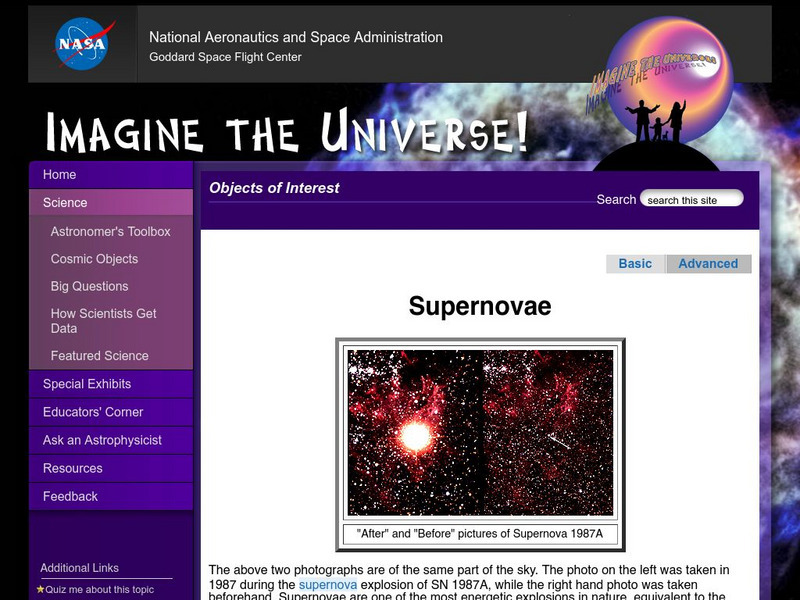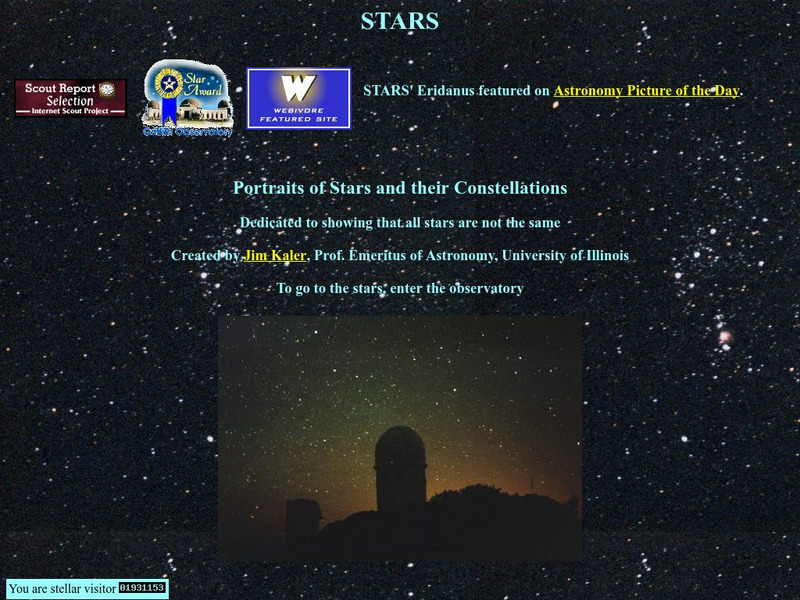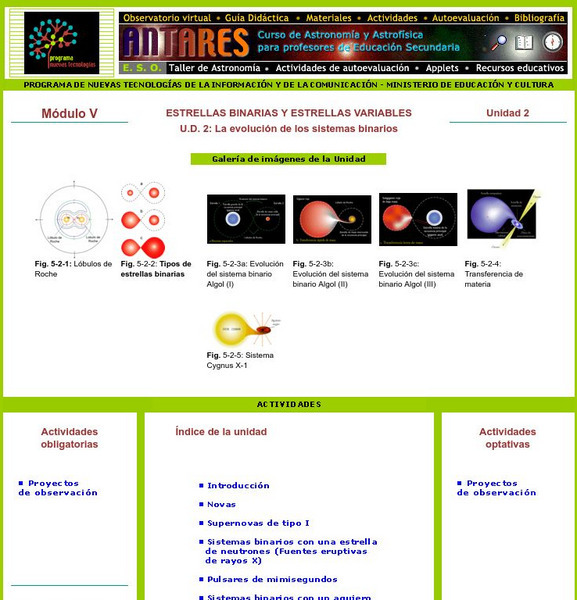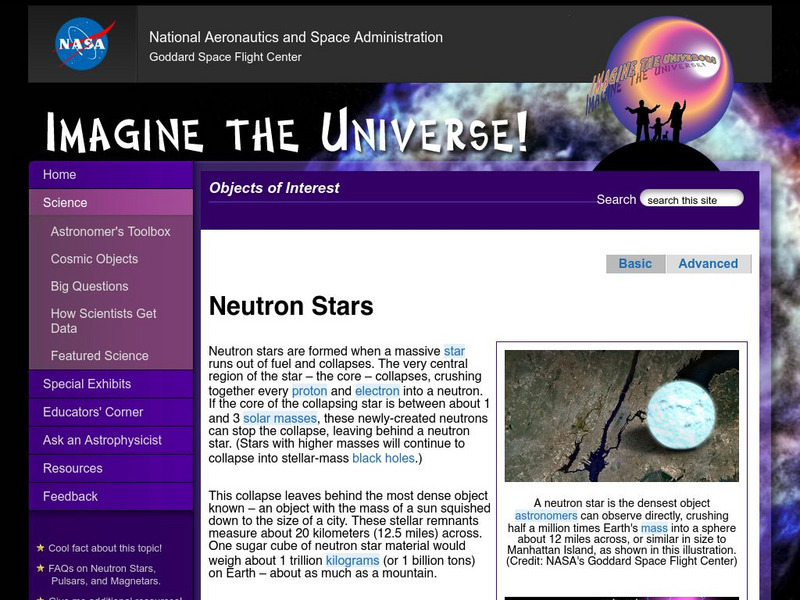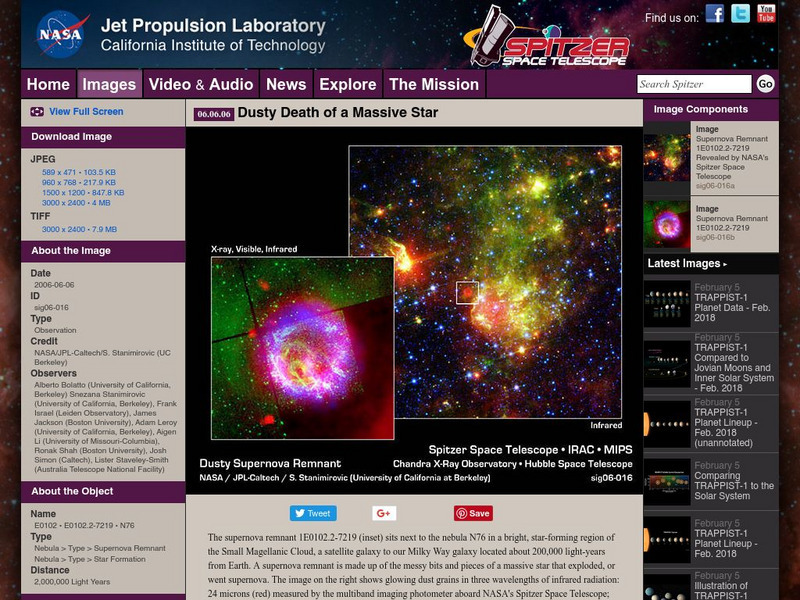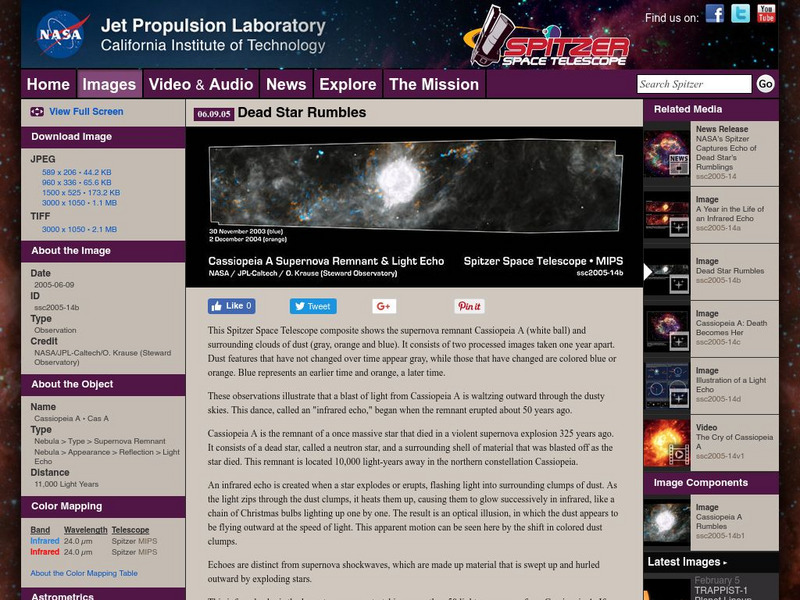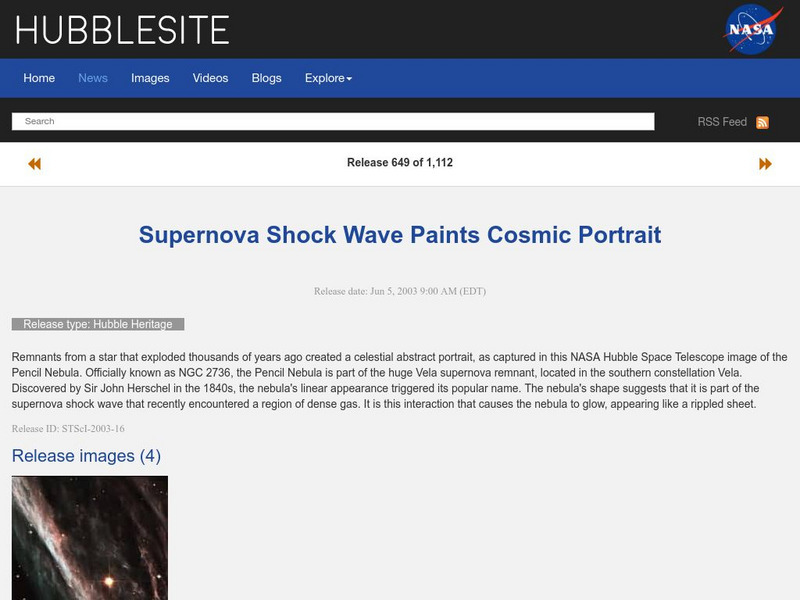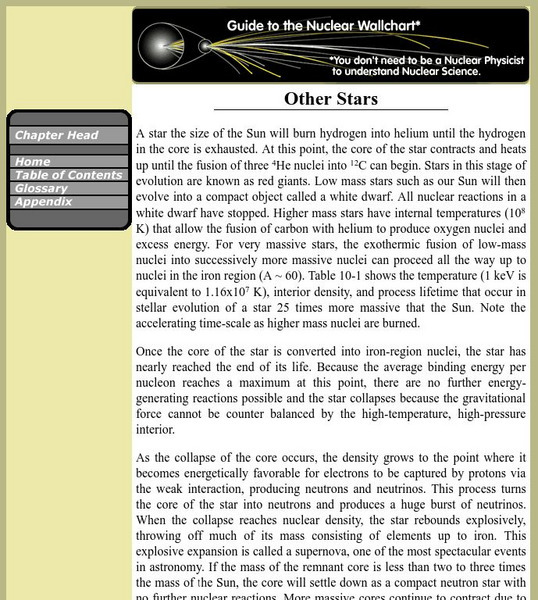Hi, what do you want to do?
University of Wisconsin
The Why Files: Pop Goes the Super Supernova
Small stars can hang around for billions of years and slowly fade away, but large stars have a spectacular way to wave goodbye. When a large star collapses, it can start a new round of nuclear fusion that powers an explosion called a...
University of California
University of California:center for Astrophysics & Space
Supernovae, neutron stars, and pulsars are topics on this page. Extensive section on pulsars that presents information on their discovery, characteristics, evolution, and location.
NASA
Nasa Space Place: What Is a Supernova?
Discover interesting facts about supernovas, what causes them, how bright they are, and how do scientists study them.
PBS
Pbs Learning Media: Birth of a Supernova, Type Ia
In this interactive activity from NOVA Online, learn about a type of exploding star - a Type Ia supernova - that is so bright that astronomers can measure the distance to the galaxy in which it resides, and even learn which elements make...
NASA
Nasa: Imagine the Universe: Supernovae (Advanced)
Supernovae are divided into two basic physical types, including a description of supernova types and how they are classified based on the existence of hydrogen spectral lines. Definitions of key terms are provided.
NASA
Nasa: Imagine the Universe: Supernovae (Basic)
A detailed description of a supernova developing from a single massive star. There is a quiz, related links, animation, lesson plans, and an FAQ sheet available also.
European Space Agency
European Space Agency: Esa Kids: Our Universe: Supernovas
A basic overview of supernovas. Links to more information about starts, planets and other objects in our solar system and galaxy are included.
Space Telescope Science Institute
Nasa: Hubble Space Telescope: Stars
At this site from the HubbleSite you can learn all about a star's life, birth, and death. Site contains links to a star movie as well as space/time location.
CK-12 Foundation
Ck 12: Earth Science: Life Cycles of Stars
[Free Registration/Login may be required to access all resource tools.] Examines the formation of a star and the main sequence of the star's life cycle.
University of Illinois
University of Illinois: Stars and Constellations
A large collection of information about and photos of the starts and constellations in the sky.
CK-12 Foundation
Ck 12: Earth Science: Life Cycle and Classification of Stars Study Guide
[Free Registration/Login may be required to access all resource tools.] This study guide summarizes key points about types of stars and he life cycle of a star. Includes a few questions to check for understanding.
Ministerio de Educación (Spain)
Ministerio De Educacion: Estrellas Binarias Y Variables Modulo v Unidad 2
In this module you will study about Novae and Supernovae and will learn about the evolution of the binary system.
NASA
Nasa: Imagine the Universe: Welcome to the World of X Ray Astronomy
Site recounts how X-rays were discovered as well as who discovered them. Offers graphics, links to facts on this topic, a quiz, and teacher resources.
BBC
Bbc: Gcse Bitesize: The Life Cycle of a Star
This lesson focuses on the formation and life cycle of stars. Stars form when enough dust and gas clump together because of gravitational forces. Nuclear reactions release energy to keep the star hot. Some stars grow larger over time....
NASA
Nasa: Imagine the Universe: Neutron Stars and Pulsars
Discover what neutron stars and pulsars are and view pictures of them. Includes links to additional resources and lesson plans.
Utah Education Network
Uen: Where Did the Matter in the Universe Come From?
Learners use various articles about how atoms are made and spread throughout the universe starting with the Big Bang. They will study the articles as groups and will then present their information to the class.
California Institute of Technology
Spitzer Science Center: Dusty Death of a Massive Star
Under the heading, "Dusty Death of a Massive Star" this site examines specific details of an image displaying bits and pieces of a star after a supernova. The image is enhanced and enlarged in a second picture.
University of Illinois
University of Illinois: Stars and Constellations: White Dwarf Supernovae
Discusses the formation of the white dwarf and the role this star plays in the formation of a white dwarf supernovae.
California Institute of Technology
Spitzer Science Center: Dead Star Rumbles
This image, titled "Dead Star Rumbles" features a medium-sized image of the remnants of Cassiopeia A and its surrounding infrared echo. The text under the image details various specifics about the picture.
Space Telescope Science Institute
Hubble Site: Supernova Shock Wave
This site from the Hubblesite highlights an article written about a supernova shock wave. Provides images as well as video footage. Site offers links to fast facts, a question and answer section as well as related links.
Lawrence Berkeley National Laboratory
Berkeley Lab: Other Stars
Describes other stars besides the sun in our galaxy and the major stages in the evolution of a massive star.
NASA
Nasa Star Child: What Is a Light Year and How Is It Used?
This is a definition and example of how distance is measured in astronomy, such as the distance between our earth and the stars.
Space Telescope Science Institute
Hubblesite: News Center Release Archive
This site from Hubblesite has a very long list of Hubble Space Telescope Images listed by subject. General categories of subjects include Solar System, Stars, Nebulae, Star Clusters, Novae, Supernovae, Stellar evolutionn, Galaxies, and...
NASA
Nasa Space Place: What Is a Nebula?
Learn about nebula and how stars form inside, and see some exciting images.








